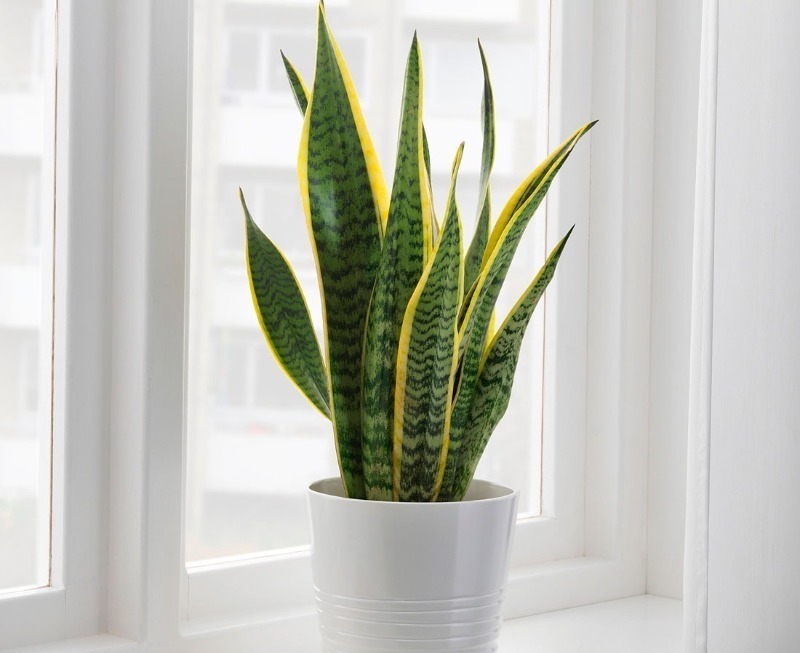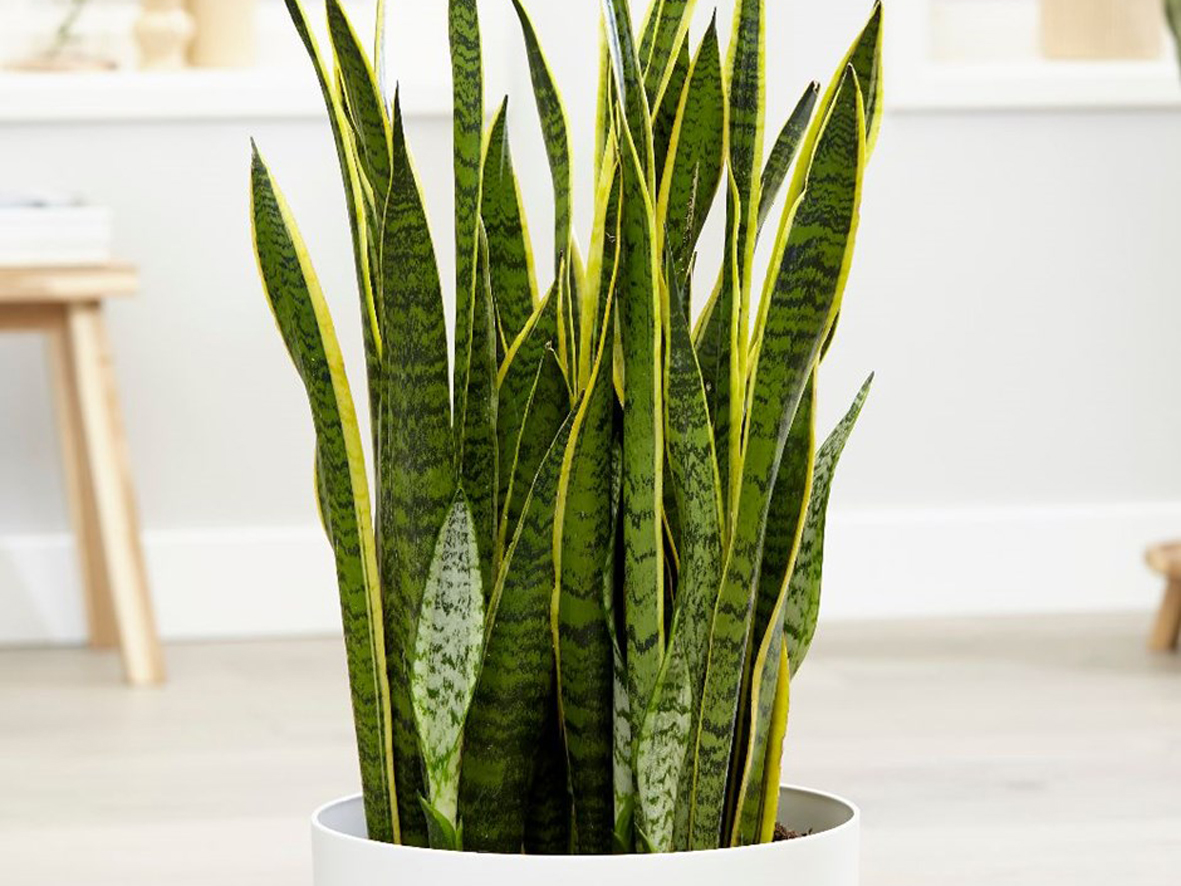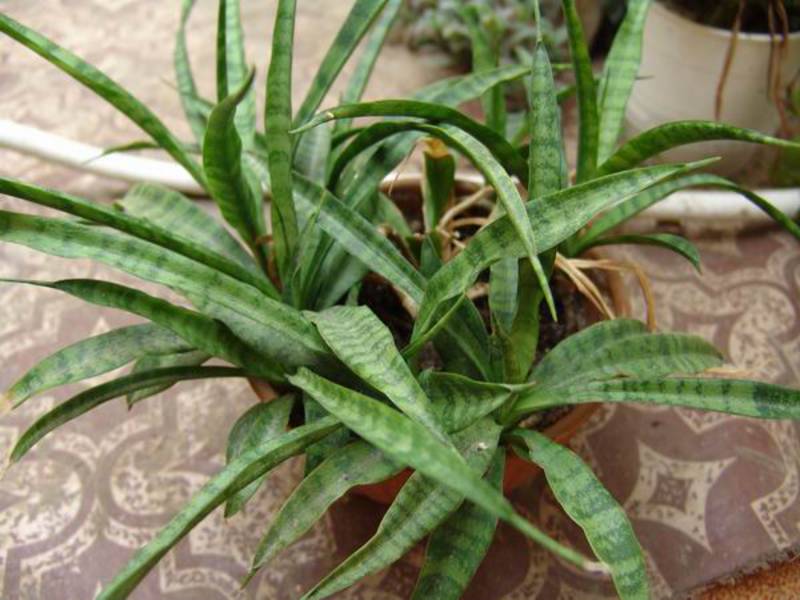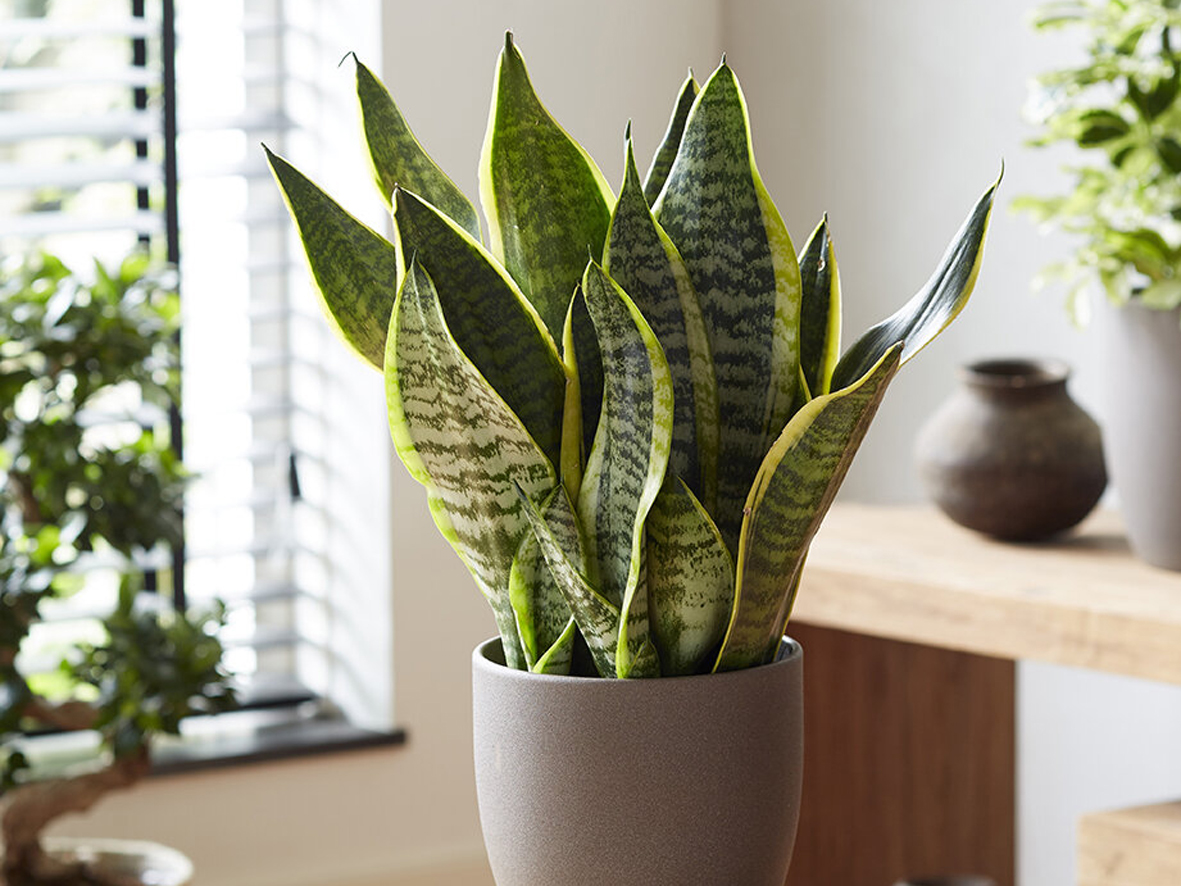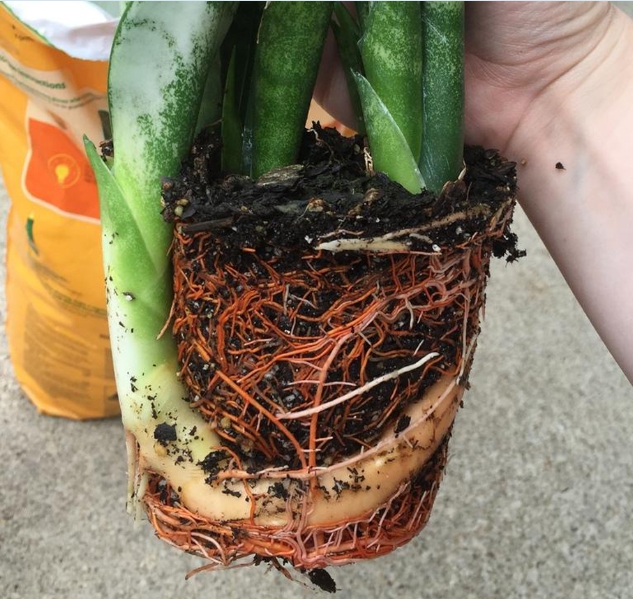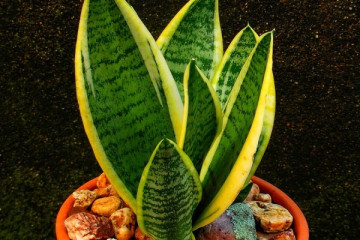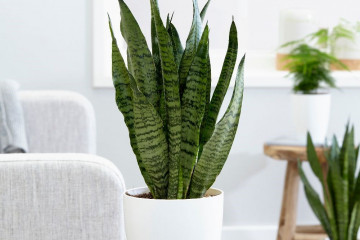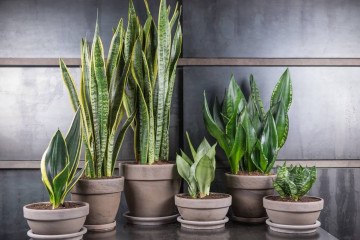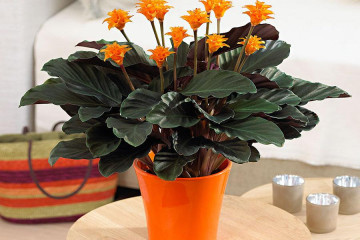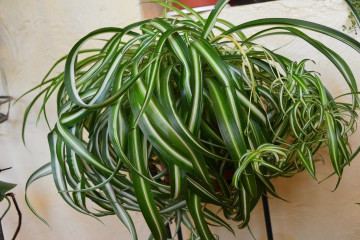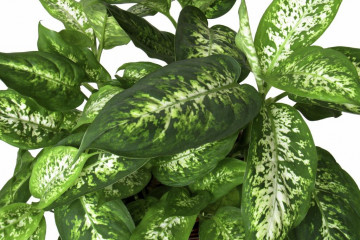Sansevieria - home care
Content:
Sansevieria flower has a controversial reputation among indoor plant lovers. Some appreciate it for its unpretentiousness, but its unsightly appearance has become a reason for some to refuse to grow this plant. Experienced growers know that besides the plant with the usual dark green leaves, there are many other varieties that are much more attractive. The advantage of sansevieria is the fact that, regardless of the variety, the flower is very unpretentious.
Description of the plant and popular varieties
The homeland of the flower is Africa, North America and South Asia. In its natural environment, the plant is found in tropical and subtropical forests. Sansevieria was previously attributed to the Agave family, but then it became a member of the Asparagus family, but this controversial issue is still open. The flower has another name - "pike tail".
The plant is a rosette of dense fleshy leaves, the color of which has a heterogeneous texture. Leaves are elongated and pointed at the end. In nature, in spring, sansevieria blooms and releases a peduncle, on which small cream-colored flowers are densely located.
Due to the fact that this does not always happen, many growers do not know at all how sansevieria blooms.
Popular varieties
The total number of varieties of sansevieria exceeds the mark of 80 pieces, but no more than 10 copies are grown as a houseplant. Among them there are especially attractive varieties that stand out favorably with the unusual color and shape of the leaves.
Sansevieria Laurento
On the basis of this variety, many more decorative varieties have been bred. Its distinctive feature is yellow longitudinal stripes along both edges of the leaf blade.
Sansevieria Moonshine
A feature of the variety is the gray-green color of the leaves with a silvery tint. The shape of the leaf plate is more rounded than that of other varieties, but also pointed at the end.
Sansevieria Futura
It also has a slightly rounded leaf shape with a characteristic pointed end. Each sheet is framed with a yellow stripe.
Sansevieria Dooneri
This variety is more like a succulent than anyone else. The leaf rosette consists of flat, erect leaves, the number of which can be up to 20. Each leaf is 3 cm wide and 40 cm long.
Separately, it is worth noting several varieties that have a very unusual leaf shape. These include cylindrical and large sansevieria. The first has cone-shaped leaves, while the second has very large and oval leaves.
Sansevieria: home care
As mentioned above, regardless of the variety of sansevieria, the flower is very unpretentious. But the plant still has some requirements for care at home. Also variegated varieties need more intense illumination compared to more uniformly colored ones.
Sansevieria care includes several important points:
- Illumination. The flower can grow both in the light and in partial shade. It is not worth placing the plant in full shade, since the color of the leaves will suffer from this.
- Temperature. It will be optimal for the plant to maintain the temperature within the range of 19-23 ° C. The main thing is not to lower the indicator by more than 10 degrees, otherwise the flower will die.
- Watering. Thanks to the fleshy leaves, the plant can accumulate moisture, so a short drought is not terrible for it. It is necessary to moisten the soil as it dries up by 3-4 cm. In winter, the frequency of irrigation is reduced to 1 time per month.
- Humidity. The flower has no special requirements for air humidity. It is enough to simply wipe the leaves from dust, but it is not at all necessary to spray them.
- Soil composition. You can use a multipurpose potting medium or mix 2/1/1 garden soil, peat and sand.
- Top dressing. During the period of active growth, fertilizing is applied at a frequency of 1 time per 4 weeks. You can use ready-made mineral dressings for decorative deciduous indoor flowers.
It is worth using top dressing with caution. It is better to reduce the rate indicated in the instructions by 2 times. If the variety has a variegated leaf color, then it is better to dilute the fertilizer 3 times weaker than for other plants. An excess of nutrients can lead to the fact that the leaf plate becomes more uniform or completely green.
Features of winter care
It is worth noting that the dormant period of the flower is practically not pronounced. It is not necessary to reduce the temperature and watering accordingly. It is worth bringing the plant to a dormant state only if there is a need for sansevieria to bloom, although sometimes the culture releases a peduncle in the summer.
Most often, in indoor conditions, the plant is grown for decorative foliage, and not flowers. Unlike the leaf plate, the flowers of the culture are rather faded and inconspicuous, so it is not so offensive if the plant refuses to bloom. Therefore, a special regime should be observed in winter only when there is an opportunity for this. But it is still recommended to reduce the frequency of watering and feeding during this period, as this allows the plant to rest and has a beneficial effect on its growth.
When and how it blooms
Under indoor growing conditions, sansevieria blooms in the summer for only 2 weeks. The inflorescence is a thin and long peduncle, on which there are small milky flowers with a greenish tint. They resemble lilies in shape.
Particularly striking is the presence of a pleasant aroma in the inflorescences. Another feature is that the flowers bloom in the evening. Against the background of rich and luscious foliage, the graceful and fragrant flowers of sansevieria look just amazing.
Pruning
Given the fact that the plant does not have a trunk and consists only of leaves, there is no need for pruning. Only leaves damaged by the disease should be removed, or cut off for reproduction. To obtain new copies of the flower, mature and healthy leaf plates are used.
Reproduction
Regarding sansevieria, 2 methods of reproduction are applicable: by leaf and by dividing the rhizome. Both are equally easy to implement and can be applied quite successfully.
The division of the rhizome should be timed to the time of transplantation. The plant is removed from the pot and the root is divided into several parts using a sharp and clean knife. The division should be carried out so that at least 1 growth point remains on each part. The resulting parts are planted in separate containers and watered with a small amount of water.It should be noted that only with this method of reproduction, the plants will retain all the qualities of the mother culture, in contrast to the specimens obtained from the leaf. It is only possible to reproduce varieties with variegated leaves in this way.
A flower can reproduce by a leaf, which is also not difficult. To do this, a large and healthy leaf is cut across, kept in air for 2-3 hours and the sansevieria is planted in a container with sand. A shelter is installed on top and watering is carried out into the pallet. In a month, the rooting process will be completed and young plants will start to grow.
Sansevieria: home transplant
Given the fact that the root system of sansevieria has the ability to actively grow, it is necessary to transplant the flower quite often. Experienced growers advise every 2 years, in spring or autumn, to completely change the soil and capacity of the plant. The transplant process consists of several sequential steps:
- The plant is carefully removed from the pot.
- The root system is freed as much as possible from the remnants of old soil.
- A drainage layer 2-3 cm thick is poured onto the bottom of the container.
- Fill the pot 1/3 with soil.
- Place the plant in a container and gently straighten the roots.
- Moderately watered and covered with soil to the edge.
Repeated irrigation is not worth it. For rooting, the flower does not require a large amount of moisture: a one-time watering directly to the roots will be quite enough. Instead of being beneficial, being hydrated with plenty of moisture can be harmful.
Possible growing problems
Sansevieria rarely gets sick and is affected by pests. Most of the problems that can arise when growing this indoor plant are due to care errors:
- Lack of lighting can lead to tarnishing and dark spots.
- Waterlogging leads to the development of root rot, the first sign of which is that the leaves begin to turn yellow.
- From exposure to low temperatures, the leaf plate can turn black and become lethargic, and the plant can die as a result.
- Drafts can lead to wilting of leaves.
- Poor soil for sansevieria can lead to diseases such as root rot.
If the leaves of sansevieria have changed color, began to curl or wither, the care should first be analyzed. Only after finding out why there was a deterioration in appearance, it is worth taking measures and eliminating errors.
The list of pests that sansevieria can suffer from attack includes scale insects, thrips, whitefly and mealybug. Thrips mainly affect the lower surface of the leaves, and the whitefly settles both in the ground and on the upper part of the plant. The mealybug gradually oppresses the entire flower, but the spreading process begins from the point of growth of the rosette. At the first signs of damage to the flower, an insecticide treatment should be carried out. In especially severe cases, it is better to transplant the plant and begin to take good care of it.
Sansevieria is one of the most unpretentious decorative deciduous indoor plants. About 10 varieties are suitable for growing in an apartment, which differ in the shape and color of the leaves. Which one to choose is a private matter of the grower. The flower practically does not get sick and is rarely affected by pests.All problems during cultivation usually arise from errors in care, but if they are eliminated in time, the flower is almost guaranteed to be saved.
